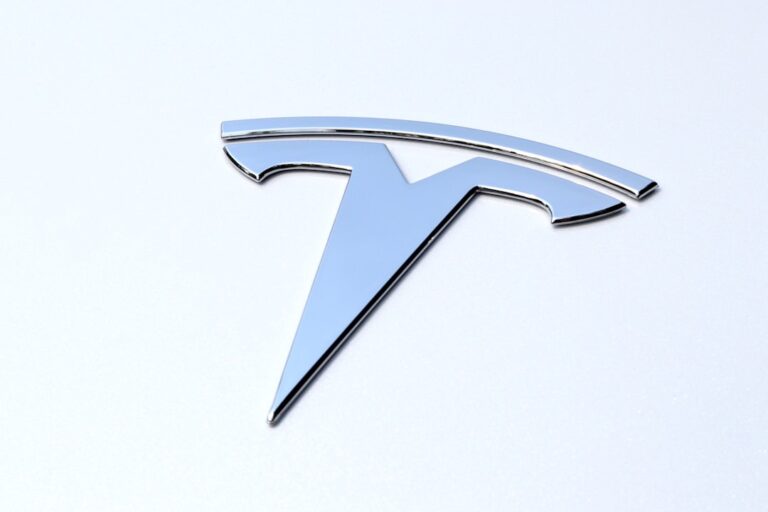
Tesla, Inc., founded in 2003, has become synonymous with electric vehicles (EVs) and has played a pivotal role in transforming the automotive landscape. Initially, the company faced skepticism and challenges typical of any startup, especially in an industry dominated by traditional automakers. However, through innovative engineering, strategic marketing, and a visionary approach led by CEO Elon Musk, Tesla has risen to prominence.
The launch of the Tesla Roadster in 2008 marked a significant milestone, showcasing that electric cars could be both high-performance and desirable. This was not just a vehicle; it was a statement that electric vehicles could compete with their gasoline counterparts. As Tesla continued to innovate, the introduction of the Model S in 2012 further solidified its position in the market.
The Model S was not only a luxury sedan but also boasted impressive range and performance metrics that outshone many traditional vehicles. With features like Autopilot and over-the-air software updates, Tesla redefined what consumers could expect from a car. By 2021, Tesla had sold over 1 million vehicles globally, establishing itself as the leading EV manufacturer.
This meteoric rise has not only changed consumer expectations but has also set a new standard for what electric vehicles can achieve.
Key Takeaways
- Tesla has rapidly risen to become a major player in the electric vehicle market, challenging traditional automakers with its innovative approach and cutting-edge technology.
- Traditional automakers have been disrupted by Tesla’s success, forcing them to accelerate their own electric vehicle development and invest in new technologies to compete.
- Tesla has played a significant role in influencing the adoption of electric vehicles, driving consumer interest and demand for sustainable transportation options.
- Tesla has been at the forefront of advancing electric vehicle technology, pushing the boundaries of performance, range, and charging infrastructure.
- Tesla’s impact on infrastructure for electric vehicles has been substantial, with the company investing in a global network of charging stations to support the growing number of electric vehicles on the road.
Disruption of Traditional Automakers by Tesla
Tesla’s ascent has sent shockwaves through the automotive industry, prompting traditional automakers to rethink their strategies. The company’s direct-to-consumer sales model bypasses the conventional dealership network, allowing for a more streamlined purchasing experience. This approach has challenged the status quo, forcing established brands to adapt or risk obsolescence.
Major players like Ford and General Motors have announced ambitious plans to electrify their fleets, recognizing that Tesla’s success is not merely a trend but a fundamental shift in consumer preferences. Moreover, Tesla’s focus on software and technology has disrupted the traditional automotive manufacturing process. While legacy automakers have historically prioritized hardware and mechanical engineering, Tesla’s integration of advanced software systems has set it apart.
Features such as over-the-air updates and autonomous driving capabilities have become benchmarks for modern vehicles. As a result, traditional automakers are now investing heavily in technology and innovation to keep pace with Tesla’s advancements, leading to a more competitive and rapidly evolving market.
Tesla’s Influence on the Adoption of Electric Vehicles

Tesla’s influence extends beyond its own sales figures; it has played a crucial role in normalizing electric vehicles in the eyes of consumers.
As more consumers see their friends and neighbors driving Teslas, the stigma surrounding electric vehicles diminishes.
This social proof is vital in encouraging potential buyers to consider EVs as viable alternatives to traditional gasoline-powered cars. Furthermore, Tesla’s commitment to expanding its Supercharger network has alleviated concerns about range anxiety—one of the primary barriers to EV adoption. By providing convenient charging solutions across major highways and urban areas, Tesla has made long-distance travel feasible for electric vehicle owners.
This infrastructure development not only supports Tesla drivers but also encourages other manufacturers to invest in charging solutions, further accelerating the transition to electric mobility.
Tesla’s Role in Advancing Electric Vehicle Technology
| Metrics | Data |
|---|---|
| Number of Electric Vehicles Sold | Approximately 500,000 in 2020 |
| Range of Electric Vehicles | Up to 370 miles on a single charge |
| Charging Infrastructure | Over 25,000 Superchargers globally |
| Battery Technology | Developed high-performance lithium-ion batteries |
| Autonomous Driving Capabilities | Leading the industry in self-driving technology |
Tesla is at the forefront of electric vehicle technology, continually pushing the boundaries of what is possible. The company’s innovations in battery technology have been particularly noteworthy. Tesla’s Gigafactories produce lithium-ion batteries at scale, significantly reducing costs and increasing energy density.
This advancement allows for longer ranges and faster charging times, making electric vehicles more appealing to consumers who may have previously been hesitant. In addition to battery technology, Tesla has pioneered advancements in autonomous driving capabilities through its Autopilot system. While fully autonomous vehicles are still on the horizon, Tesla’s incremental improvements have set a benchmark for safety and convenience in driving.
The company’s use of artificial intelligence and machine learning to enhance its self-driving features demonstrates how technology can transform transportation. As these technologies continue to evolve, they will likely play a critical role in shaping the future of mobility.
Tesla’s Impact on Infrastructure for Electric Vehicles
The growth of electric vehicles necessitates a robust infrastructure to support them, and Tesla has taken significant steps to build this framework. The establishment of the Supercharger network is one of the most visible aspects of this effort. With thousands of charging stations strategically located around the world, Tesla has made it easier for drivers to recharge their vehicles quickly and efficiently.
This network not only serves Tesla owners but also sets a standard for other manufacturers to follow. Moreover, Tesla’s influence has prompted cities and governments to invest in EV infrastructure as well. Many municipalities are now prioritizing the installation of public charging stations and incentivizing businesses to provide charging options for employees and customers alike.
This collaborative effort between private companies and public entities is essential for creating an environment where electric vehicles can thrive. As infrastructure continues to expand, it will further facilitate the adoption of EVs across various demographics.
Tesla’s Effect on Consumer Perception of Electric Vehicles

Rebranding Sustainability
Tesla’s image is now synonymous with innovation and sustainability, resonating with a growing segment of the population that values eco-friendly choices. The brand’s marketing campaigns have effectively communicated the benefits of electric vehicles beyond just environmental considerations, highlighting their performance capabilities and thrilling driving experiences.
Shifting the Narrative
The emphasis on performance, such as acceleration times that rival sports cars, has shifted the narrative around EVs from being merely “green” options to exciting alternatives that offer a unique driving experience. This change in perception is crucial for attracting new customers who may have previously dismissed electric vehicles as boring or underpowered.
A New Era for Electric Vehicles
As a result, electric vehicles are now seen as desirable, cutting-edge technology that offers a unique combination of innovation, sustainability, and performance. This shift in consumer perception marks a new era for electric vehicles, one where they are no longer viewed as inferior alternatives to gasoline-powered cars, but as a preferred choice for those who value excitement, innovation, and eco-friendliness.
Tesla’s Contribution to Environmental Sustainability
Tesla’s mission is rooted in sustainability, aiming to accelerate the world’s transition to renewable energy. By producing electric vehicles that emit no tailpipe emissions, Tesla contributes significantly to reducing air pollution and greenhouse gas emissions associated with traditional transportation methods. According to a report by the International Energy Agency (IEA), transitioning to electric vehicles could reduce global CO2 emissions by up to 1.5 gigatons annually by 2030 if adopted widely.
Moreover, Tesla is not just focused on cars; its commitment extends to energy solutions through products like solar panels and energy storage systems such as the Powerwall. By integrating renewable energy sources with electric vehicle technology, Tesla is creating a holistic approach to sustainability that addresses both transportation and energy consumption. This comprehensive strategy positions Tesla as a leader in the fight against climate change while inspiring other companies to adopt similar practices.
The Future of Tesla and the Electric Vehicle Market
Looking ahead, Tesla is poised for continued growth and innovation within the electric vehicle market. With plans for new models like the Cybertruck and advancements in battery technology on the horizon, the company aims to expand its reach into new segments and demographics. Additionally, as global regulations increasingly favor electric vehicles over fossil fuel-powered cars, Tesla stands to benefit from favorable market conditions.
However, challenges remain on the road ahead. Competition is intensifying as traditional automakers ramp up their EV offerings and new entrants emerge in the market. To maintain its leadership position, Tesla must continue innovating while addressing production challenges and scaling its operations effectively.
The company’s ability to adapt to changing market dynamics will be crucial in shaping its future trajectory. In conclusion, Tesla’s impact on the electric vehicle market is profound and multifaceted. From disrupting traditional automakers to influencing consumer perceptions and advancing technology, Tesla has become a catalyst for change in the automotive industry.
As we look toward a future increasingly defined by sustainability and innovation, one thing is clear: Tesla will remain at the forefront of this exciting evolution. Further Reading:
1. International Energy Agency (IEA) – [Global EV Outlook 2021](https://www.iea.org/reports/global-ev-outlook-2021)
2.
BloombergNEF – [Electric Vehicle Outlook 2021](https://about.bnef.com/electric-vehicle-outlook/)
3. Tesla Official Website – [Tesla](https://www.tesla.com)
4. U.S.
Department of Energy – [Electric Vehicles](https://www.energy.gov/eere/electricvehicles/electric-vehicles)
5. Forbes – [How Tesla Is Changing The Auto Industry](https://www.forbes.com/sites/patrickmoorhead/2021/06/01/how-tesla-is-changing-the-auto-industry/?sh=4c5e4f7e4b8d) And here’s a kid-friendly joke for you: Why did the electric car break up with its gas-powered partner? Because it found someone who charged it up!
If you’re interested in learning more about Tesla’s stock performance and market trends, you should check out the article “Tesla Stock Analysis: Navigating Turbulence Amid Global EV Market Transformation”. This insightful piece delves into the challenges and opportunities facing Tesla as the electric vehicle market continues to evolve. It provides valuable analysis and guidance for investors looking to navigate the changing landscape of the automotive industry.
Check out the very latest Tesla products here:
FAQs
What is the stock symbol TSLA?
The stock symbol TSLA refers to the publicly traded shares of Tesla, Inc., an American electric vehicle and clean energy company.
Where can I find the stock symbol TSLA?
The stock symbol TSLA can be found on major stock exchanges such as the NASDAQ in the United States.
What does the stock symbol TSLA represent?
The stock symbol TSLA represents the ownership of shares in Tesla, Inc., allowing investors to buy and sell ownership stakes in the company.
Is the stock symbol TSLA a good investment?
The decision to invest in the stock symbol TSLA should be based on individual financial goals, risk tolerance, and thorough research of the company’s financial performance and market outlook.
How can I buy shares with the stock symbol TSLA?
Shares with the stock symbol TSLA can be purchased through a brokerage account, either online or through a traditional brokerage firm.
What factors can impact the stock symbol TSLA’s performance?
Factors such as company earnings, industry trends, economic conditions, and market sentiment can impact the performance of the stock symbol TSLA.
